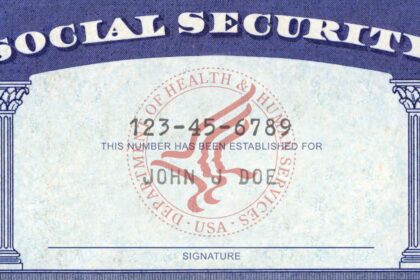Betraying Trust – Fraud Against Military Healthcare
The recent sentencing of three individuals from the Lawton, Oklahoma area—Jimmie Mathews, 41, Nathan Mathews, 42, and Amber Delger, 55—marks the culmination of a significant federal investigation into a conspiracy to commit healthcare fraud against TRICARE, the health program serving the U.S. military community. Collectively sentenced to over 12 years in federal prison and ordered to pay nearly $2.7 million in restitution, their case casts a harsh light on the persistent threat of fraud targeting essential government benefit programs.
Defrauding a program like TRICARE carries implications far beyond mere financial loss. TRICARE provides comprehensive healthcare coverage to a unique and deserving population: uniformed service members, veterans, retirees, and their families worldwide. These individuals and their families make considerable sacrifices in service to the nation, and TRICARE exists to support their health and well-being, directly contributing to military readiness. As U.S. Attorney Robert J. Troester stated following the sentencing, the defendants “exploited programs intended to provide critical benefits to our nation’s military, veterans, and their families”. Such actions represent not only a theft of taxpayer dollars but also a profound betrayal of trust, potentially undermining the very system designed to care for those who serve.
This report provides an in-depth analysis of the Oklahoma TRICARE fraud case involving the Mathews brothers and Amber Delger. It will dissect the specific mechanisms of their scheme, explain the vital role of the TRICARE program within the Military Health System, and situate this fraud within the broader context of healthcare fraud challenges across the United States. Furthermore, the report will detail the functions of the key federal agencies involved in the investigation and prosecution—the Defense Criminal Investigative Service (DCIS) and the U.S. Attorney’s Office—clarify relevant legal concepts such as “conspiracy to commit healthcare fraud” and federal sentencing considerations, and analyze the wider implications of this case for beneficiaries, taxpayers, and the ongoing efforts to protect the integrity of military healthcare programs. Throughout this analysis, concepts such as “Oklahoma TRICARE fraud,” “healthcare fraud conspiracy,” “DCIS investigation,” and “military healthcare” will be explored to provide a comprehensive understanding of the case and its context.
Anatomy of a Scheme: The Lawton TRICARE Fraud Case
The conspiracy orchestrated by Nathan Mathews, Jimmie Mathews, and Amber Delger represents a calculated exploitation of the TRICARE system through their Lawton-based massage therapy businesses. Understanding the participants, their methods, the financial scale, and the ultimate legal consequences provides a clear picture of how such fraud can operate and the response it elicits from federal authorities.
The Conspirators and Their Businesses
The individuals at the center of this scheme were all residents of the Lawton, Oklahoma area: Nathan Mathews (42), Jimmie Mathews (41), and Amber Delger (55). Their fraudulent activities were channeled through two primary business entities:
- Emerald Lane Therapy Services (Emerald Lane): Owned by Nathan Mathews beginning in 2016, with Amber Delger later becoming a co-owner. This business operated as a massage therapy provider in Lawton.
- Stars & Stripes Therapy (Stars & Stripes): Owned jointly by Nathan and Jimmie Mathews, this separate massage therapy provider opened in Lawton in January 2020.
Both Emerald Lane and Stars & Stripes purported to offer legitimate therapeutic services to TRICARE beneficiaries. As part of their operations, they submitted claims for these services directly to the Defense Health Agency (DHA), the administrative body overseeing the TRICARE program, and consequently received payments from the DHA.
The Modus Operandi – A Multi-Faceted Fraud
According to public records and court documents, the conspiracy to defraud TRICARE commenced around January 2018 and involved several distinct fraudulent practices. The core of the case rests on the legal definition of conspiracy, which requires an agreement between two or more individuals to commit an unlawful act—in this instance, healthcare fraud—and willful participation in that agreement. The methods employed by the defendants included:
- Billing for Services Not Rendered: This was the primary mechanism of the fraud. Court documents allege that after a TRICARE beneficiary visited either Emerald Lane or Stars & Stripes, the defendants would proactively schedule multiple future appointments for that beneficiary, often extending many months into the future. Crucially, even if the beneficiary failed to attend these scheduled appointments, or ceased visiting the clinics altogether, the defendants continued to submit claims to TRICARE as if the services had been provided. News reports indicated the scheme even involved billing for services allegedly rendered when the businesses were known to be closed for holidays. This practice of billing for phantom services is a well-documented and prevalent form of healthcare fraud across various programs.
- Misuse of Provider Identity (NPI Fraud): Beyond billing for non-existent appointments, Emerald Lane engaged in another specific type of fraud: billing TRICARE using the National Provider Identifier (NPI) number associated with an occupational therapist long after that therapist had stopped working for the company. The NPI is a unique identification number for covered health care providers. Using an NPI without authorization, particularly for a provider no longer affiliated with the billing entity, constitutes a form of medical identity theft or misuse of provider identifiers, enabling the submission of fraudulent claims under false pretenses.
The conspiracy spanned several years, beginning in early 2018 and continuing until charges were filed in May 2024. This extended duration allowed the fraudulent billings to accumulate significantly.
The Financial Toll – Quantifying the Damage
The scale of the fraud perpetrated by the Mathews brothers and Delger was substantial, demonstrating a significant drain on TRICARE resources intended for legitimate patient care. Key financial figures reveal the extent of the scheme:
- Total Billed Amount: Emerald Lane and Stars & Stripes collectively submitted claims totaling more than $7 million to TRICARE.
- Total Received Amount: From these fraudulent billings, the businesses improperly received nearly $3 million in reimbursement payments from the Defense Health Agency.
The considerable gap between the $7 million billed and the nearly $3 million paid out warrants examination. It could suggest that TRICARE’s claims review processes, potentially involving automated checks or audits by the DHA or its regional contractors, flagged and denied a substantial portion—approximately $4 million—of the submitted claims. Alternatively, or perhaps concurrently, the $7 million figure might represent an extremely aggressive billing strategy where claims were grossly inflated in volume or value, with the defendants anticipating that only a fraction would ultimately be paid. Regardless of the precise reason for the discrepancy, the fact that nearly $3 million in taxpayer funds were improperly disbursed highlights significant vulnerabilities in preventing payments for non-rendered services and unauthorized provider billing within the TRICARE system at the time.
The Legal Reckoning – Charges, Pleas, and Sentencing
The federal government’s response involved a coordinated effort leading to charges, guilty pleas, and ultimately, significant prison sentences and restitution orders.
- Charging Instruments: The legal process began formally in May 2024. Amber Delger was charged via a document known as an Information with one count of conspiring to commit health care fraud. Simultaneously, Nathan and Jimmie Mathews were charged through a 16-count federal grand jury Indictment, which included one count of conspiracy to commit health care fraud and fifteen substantive counts of health care fraud. The distinction is important: an Indictment requires a federal grand jury to determine that probable cause exists to believe a crime was committed, a protection guaranteed by the Fifth Amendment for felony charges. An Information, conversely, is filed directly by the U.S. Attorney’s Office and typically occurs when a defendant waives their right to a grand jury proceeding, often in anticipation of pleading guilty. Delger’s charge by Information aligns with her earlier guilty plea compared to the Mathews brothers.
- Charges: The central charge for all three was conspiracy to commit health care fraud, likely under 18 U.S.C. § 1349, which penalizes agreements to commit fraud offenses. The fifteen additional counts against the Mathews brothers likely correspond to specific instances of fraudulent billing under the main healthcare fraud statute, 18 U.S.C. § 1347.
- Guilty Pleas: All three defendants ultimately admitted guilt. Delger pleaded guilty to conspiring to commit health care fraud on June 17, 2024. Jimmie and Nathan Mathews followed, pleading guilty to the same conspiracy charge in October 2024.
- Sentences & Restitution: U.S. District Judge Jodi W. Dishman imposed the sentences. Nathan Mathews received the longest term: 87 months (over 7 years) in federal prison, followed by two years of supervised release. He was also ordered to pay $1,410,255.66 in restitution. Jimmie Mathews was sentenced to 42 months (3.5 years) in prison, followed by three years of supervised release, and ordered to pay $632,026.43 in restitution. Amber Delger, who had pleaded guilty earlier, was sentenced on January 31, 2025, to 26 months (over 2 years) in prison, followed by two years of supervised release, and ordered to pay $653,269.00 in restitution.
The following table summarizes the outcomes for each defendant:
| Defendant | Age | Role(s) | Sentence (Months Prison) | Supervised Release (Years) | Restitution Amount | Snippet Ref |
|---|---|---|---|---|---|---|
| Nathan Mathews | 42 | Owner (Emerald Lane, Stars & Stripes) | 87 | 2 | $1,410,255.66 | |
| Jimmie Mathews | 41 | Co-Owner (Stars & Stripes) | 42 | 3 | $632,026.43 | |
| Amber Delger | 55 | Co-Owner (Emerald Lane) | 26 | 2 | $653,269.00 |
Judicial Condemnation
In delivering the sentences, Judge Dishman characterized the fraud scheme in stark terms, describing it as “egregious and far reaching in its scope, duration, and impact”. Her comments underscore the court’s recognition of the severity of the offense, considering not just the financial loss but the extended period over which the fraud occurred and its effect on the integrity of the TRICARE program. Judge Dishman further emphasized the need for public deterrence, stating that “the public needs to know that health care fraud is not acceptable, will not be tolerated, and will result in prosecution and punishment”. This judicial perspective highlights the broader societal interest in holding perpetrators accountable and discouraging similar conduct.
TRICARE: The Health Care Lifeline for America’s Military Community
To fully appreciate the gravity of the fraud committed by the Mathews and Delger, it is essential to understand the program they targeted: TRICARE. Far from being just another insurance plan, TRICARE is a cornerstone of the support system for the U.S. military community, inextricably linked to national security and the well-being of service members and their families.
Purpose and Mission
TRICARE is the uniformed services health care program provided by the U.S. Department of Defense Military Health System (MHS). Its stated mission is twofold: to enhance the Department of Defense’s and the nation’s security by providing health support across the full spectrum of military operations, and to sustain the health of all individuals entrusted to its care. TRICARE offers comprehensive coverage, including various health plans (like TRICARE Prime and TRICARE Select), special programs tailored to specific needs, prescription drug coverage, and dental plans. Most of its health plans satisfy the minimum essential coverage requirements mandated by the Affordable Care Act.
Eligible Population
TRICARE serves a broad and diverse population connected to the U.S. military. Eligibility is determined by the sponsor’s uniformed service and recorded in the Defense Enrollment Eligibility Reporting System (DEERS), a database crucial for accessing benefits. Those eligible generally include :
- Active duty service members and their families
- National Guard and Reserve members and their families (eligibility varies based on duty status)
- Military retirees and their families
- Survivors of deceased service members
- Certain former spouses of service members
- Medal of Honor recipients and their families
- Others registered in DEERS, potentially including dependent parents or foreign force members under specific agreements.
Maintaining accurate information in DEERS is critical for beneficiaries to ensure uninterrupted access to their TRICARE benefits.
Administration: The Role of the Defense Health Agency (DHA)
The management and administration of the complex TRICARE program fall under the purview of the Defense Health Agency (DHA). The DHA operates under the authority of the Assistant Secretary of Defense for Health Affairs. Established on October 1, 2013, the DHA is a joint, integrated combat support agency designed to enable the Army, Navy, and Air Force medical services to provide a medically ready force and a ready medical force. It plays a central role in integrating clinical and business operations across the entire Military Health System.
Within the DHA’s organizational structure, the TRICARE Health Plan (THP) directorate holds direct responsibility for the TRICARE program. This directorate develops TRICARE policy, manages contracts with private sector healthcare providers, oversees plan execution, handles medical benefits and reimbursement, and manages the integrated healthcare delivery system within the U.S. TRICARE regions (currently East and West). The DHA, through its various components including THP, oversees the healthcare delivery for approximately 9.5 million TRICARE beneficiaries worldwide, utilizing a network of both military treatment facilities (MTFs) and civilian providers.
Significance and Vulnerability
TRICARE’s significance cannot be overstated. It is fundamental to maintaining the health and readiness of the U.S. military force and fulfilling the nation’s commitment to care for service members, veterans, and their families throughout their lives. However, the very structure that allows TRICARE to provide widespread access also creates inherent vulnerabilities. The program relies heavily on a vast network of civilian healthcare providers operating under regional contracts. Managing and overseeing potentially thousands of these providers—ranging from large hospital systems to smaller clinics like the massage therapy businesses in Lawton—presents significant challenges. Ensuring compliance with billing rules, verifying the necessity and delivery of services, and detecting fraudulent activity across such a dispersed network requires sophisticated monitoring systems, robust auditing capabilities, and dedicated investigative resources. The Mathews/Delger case exemplifies how determined individuals can exploit these complexities, particularly in niche provider areas, underscoring the critical need for the vigorous investigation and prosecution emphasized by U.S. Attorney Troester and DCIS Acting Special Agent in Charge Gosch in their statements regarding the protection of TRICARE.
The Wider War: Health Care Fraud in the United States
The Oklahoma TRICARE fraud case, while significant in its own right, is unfortunately not an isolated incident. It reflects a much broader national challenge: the pervasive problem of healthcare fraud, waste, and abuse across both public and private health programs. Understanding this larger context helps illuminate the systemic nature of the vulnerabilities exploited in the Lawton scheme.
Scale of the Problem
Healthcare fraud represents a massive drain on the U.S. economy, siphoning tens of billions of dollars annually from the healthcare system. This illicit activity impacts every American by diverting taxpayer funds intended for legitimate care, increasing insurance premiums, potentially exposing patients to unnecessary or harmful procedures, and undermining trust in the healthcare system. Federal programs like Medicare, Medicaid, and TRICARE are prime targets due to their size and complexity.
Recent enforcement actions underscore the scale of the problem. For example, the Department of Justice’s 2024 National Health Care Fraud Enforcement Action resulted in charges against 193 defendants across 32 federal districts, involving alleged fraudulent claims exceeding $2.75 billion. Notably, this action included charges against 76 licensed medical professionals, highlighting that fraud is not limited to fringe operators but can involve trusted members of the healthcare community. Efforts to combat this are coordinated under the Health Care Fraud and Abuse Control Program (HCFAC), established by the Health Insurance Portability and Accountability Act of 1996 (HIPAA), which brings together federal, state, and local law enforcement. In Fiscal Year 2023 alone, HCFAC efforts led to the return of over $3.4 billion to the federal government and private parties, with significant amounts specifically returned to the Medicare Trust Funds and Medicaid.
Common Tactics (Mirroring the Case)
Fraudsters employ a variety of schemes, but certain methods appear frequently in enforcement actions, including those used in the Lawton TRICARE case:
- Billing for Services Not Rendered: As seen prominently in the Mathews/Delger case , this involves submitting claims for appointments, treatments, tests, or medical equipment that were never actually provided to the patient. This remains one of the most common and straightforward types of healthcare fraud.
- Misuse of Provider or Patient Identities: This includes using stolen patient information to bill for fake services or, as occurred in the Emerald Lane component of the Lawton case , improperly using a legitimate provider’s NPI number to submit claims, often after the provider is no longer associated with the billing entity.
- Other Common Schemes: While not explicitly detailed in the source material for the Lawton case, other prevalent tactics include:
- Upcoding: Billing for a more expensive service or procedure than was actually performed (e.g., billing for a complex office visit when only a simple one occurred).
- Unbundling: Billing separately for services that are typically grouped together under a single billing code to maximize reimbursement.
- Kickbacks: Offering or receiving payments or other benefits to induce referrals of patients or orders for services/items covered by federal healthcare programs. Recent major cases have involved kickbacks related to telemedicine consultations leading to unnecessary prescriptions or lab tests.
The recurrence of schemes like billing for non-rendered services and NPI misuse across different programs and geographic areas suggests these tactics effectively exploit fundamental vulnerabilities within healthcare payment systems. The common model involves providers submitting claims (essentially self-reporting services rendered) and payers (like Medicare, Medicaid, or TRICARE contractors) processing large volumes of these claims, often relying on post-payment audits (“pay and chase”) rather than extensive pre-payment verification to detect fraud. This creates opportunities for dishonest providers to submit false claims and receive payment before discrepancies are caught, if they are caught at all.
Impact and Enforcement Focus
The consequences of healthcare fraud extend beyond financial losses. It erodes public trust, can compromise patient safety, and diverts resources from those genuinely in need. Combating this requires a multi-pronged approach. Federal agencies like the Department of Justice (DOJ), the Department of Health and Human Services Office of Inspector General (HHS-OIG), the Federal Bureau of Investigation (FBI), and the Drug Enforcement Administration (DEA) collaborate closely, often forming task forces or “Strike Forces” in high-fraud areas. A key development in recent years is the increasing reliance on sophisticated data analytics. Specialized units, such as the DOJ Fraud Section’s Health Care Fraud Unit and analysts within HHS-OIG and CMS, proactively mine claims data to identify statistical outliers, aberrant billing patterns, and emerging fraudulent schemes, allowing for more targeted investigations. This data-driven approach is crucial for staying ahead of evolving fraud tactics and focusing limited investigative resources on the most egregious offenders.
The Enforcers: Investigating and Prosecuting Federal Fraud
Bringing complex healthcare fraud schemes like the one in Lawton to justice requires the coordinated efforts of specialized federal agencies. The investigation was led by the Defense Criminal Investigative Service (DCIS), with prosecution handled by the U.S. Attorney’s Office for the Western District of Oklahoma. Understanding the distinct roles and capabilities of these entities is key to appreciating the federal response to fraud against military programs.
The Investigators: Defense Criminal Investigative Service (DCIS)
The DCIS serves as the criminal investigative arm of the Department of Defense Office of Inspector General (DoD OIG). Established in 1981, its core mission is to conduct objective and professional investigations into matters critical to DoD property, programs, and operations, with a particular focus on protecting national security, ensuring the safety and readiness of military personnel, and safeguarding taxpayer funds. DCIS special agents are federal law enforcement officers with the authority to carry firearms, make arrests, and execute search warrants.
DCIS investigates a wide range of criminal activity impacting the DoD, but several priorities are particularly relevant to cases like the Lawton TRICARE fraud :
- Healthcare Fraud: Specifically investigating fraudulent schemes targeting DoD healthcare programs like TRICARE.
- Procurement and Acquisition Fraud: Investigating fraud related to contracts for goods and services.
- Public Corruption: Investigating bribery and corruption involving DoD personnel or contractors.
- Product Substitution/Counterfeit Parts: Investigating the supply of substandard or fake parts for military equipment.
- Illegal Transfer of Sensitive Technology: Preventing the diversion of critical defense technologies.
- Cyber Crime: Investigating intrusions into DoD networks.
The involvement of DCIS in the Lawton case, as highlighted by the statement from Acting Special Agent in Charge Chad Gosch emphasizing DCIS’s commitment to protecting TRICARE , underscores the agency’s specialized role. While other federal agencies like the FBI also investigate healthcare fraud broadly , DCIS possesses unique expertise and primary jurisdiction when the fraud directly targets DoD programs and operations. This focused mandate ensures dedicated resources are applied to protect military-related assets and benefits. DCIS investigations have historically resulted in significant financial recoveries for the government and numerous criminal convictions.
The Prosecutors: U.S. Attorney’s Office (USAO)
The U.S. Attorney’s Office serves as the principal litigation arm of the Department of Justice within each federal judicial district. Led by the U.S. Attorney, who is appointed by the President, the office is staffed by Assistant U.S. Attorneys (AUSAs) responsible for prosecuting violations of federal law and representing the United States in civil litigation within their district.
USAOs handle a diverse criminal caseload, including white-collar crimes like healthcare fraud, mail fraud, wire fraud, tax evasion, public corruption, as well as drug trafficking, organized crime, cybercrime, and immigration offenses. In cases like the Lawton TRICARE fraud, AUSAs work closely with the investigating agency (here, DCIS) from the early stages. They review the evidence gathered by agents, present cases to the grand jury to seek indictments, negotiate plea agreements with defendants, conduct trials, argue legal motions before judges, and handle sentencing proceedings and appeals. In the Lawton case, Assistant U.S. Attorney D.H. Dilbeck from the U.S. Attorney’s Office for the Western District of Oklahoma prosecuted the case based on the DCIS investigation. The DOJ also maintains specialized units, like the Health Care Fraud Unit within the Criminal Division, which often partners with USAOs on particularly complex or large-scale healthcare fraud prosecutions, leveraging national expertise and resources, including the Strike Force model.
Collaboration
The successful resolution of the Lawton TRICARE fraud case exemplifies the essential collaboration between federal investigative agencies and prosecutors. DCIS conducted the detailed investigation, uncovering the evidence of the fraudulent billing practices and NPI misuse. The U.S. Attorney’s Office then leveraged that evidence to secure indictments and information, negotiate guilty pleas, and ultimately obtain convictions and significant sentences from the court. This partnership is fundamental to the federal government’s ability to hold perpetrators of complex financial crimes accountable.
Understanding the Law: Key Legal Concepts in the Case
The prosecution and sentencing of Nathan Mathews, Jimmie Mathews, and Amber Delger involved specific federal statutes and legal procedures. Grasping these concepts is crucial for understanding the legal framework applied in this healthcare fraud case.
Conspiracy to Commit Health Care Fraud (18 U.S.C. § 1349)
All three defendants pleaded guilty to conspiracy to commit health care fraud. This charge falls under 18 U.S.C. § 1349, titled “Attempt and Conspiracy.” This statute makes it a crime to attempt or conspire to commit any offense defined within Chapter 63 of Title 18, which includes major fraud offenses like mail fraud, wire fraud, bank fraud, securities fraud, and, pertinent here, health care fraud (defined in 18 U.S.C. § 1347).
To prove a conspiracy under § 1349, the government generally must establish the following elements beyond a reasonable doubt :
- An Agreement: Two or more persons formed an agreement to commit the underlying offense (in this case, health care fraud as defined by § 1347). This agreement does not need to be formal or explicit; it can be inferred from the parties’ actions.
- Knowledge of Unlawful Purpose: The defendant knew the purpose of the agreement was unlawful.
- Willful Participation: The defendant knowingly and willfully joined the conspiracy with the intent to help advance its unlawful purpose.
Notably, § 1349 carries the same penalties as the underlying offense that was the object of the conspiracy. Some interpretations suggest that § 1349, unlike the general federal conspiracy statute (18 U.S.C. § 371), might not always require the prosecution to prove an “overt act” taken in furtherance of the conspiracy beyond the agreement itself, making it a particularly powerful tool for prosecutors in fraud cases. By pleading guilty, the defendants admitted to knowingly and willfully agreeing among themselves to defraud the TRICARE program.
Health Care Fraud (18 U.S.C. § 1347)
While the defendants pleaded guilty only to the conspiracy charge, the fifteen substantive counts of health care fraud initially brought against the Mathews brothers fall under 18 U.S.C. § 1347. This statute defines the core federal crime of health care fraud. A person violates § 1347 if they knowingly and willfully execute, or attempt to execute, a scheme or artifice that either :
- Defrauds any health care benefit program (like TRICARE, Medicare, Medicaid, or private insurance); or
- Obtains, by means of false or fraudulent pretenses, representations, or promises, any money or property owned by, or under the custody or control of, any health care benefit program, in connection with the delivery of or payment for health care benefits, items, or services.
The penalties for violating § 1347 are severe. A conviction generally carries a maximum prison sentence of 10 years. However, if the fraud results in serious bodily injury to a patient, the maximum increases to 20 years. If the violation results in death, the maximum penalty is life imprisonment. The sentences imposed in the Lawton case (ranging from 26 to 87 months) fall within the standard 10-year maximum, as there was no indication of patient injury or death resulting from the fraud itself.
Charging Instruments: Indictment vs. Information
As previously noted, Delger was charged by Information, while the Mathews brothers were charged by Indictment. The Fifth Amendment to the U.S. Constitution guarantees the right to indictment by a grand jury for capital or otherwise infamous crimes (interpreted to mean felonies punishable by more than one year in prison). The grand jury, composed of citizens, reviews the prosecution’s evidence in secret and determines if there is probable cause to issue formal charges via an indictment.
An Information, however, is a formal accusation filed directly by the prosecutor without grand jury involvement. A felony case can proceed by Information only if the defendant waives their constitutional right to a grand jury indictment. This often happens when a defendant intends to plead guilty, perhaps as part of a plea agreement negotiated with the prosecution, thereby bypassing the grand jury process. The fact that Delger was charged by Information strongly suggests she waived indictment and likely reached an agreement to plead guilty earlier than her co-conspirators, which is consistent with the reported plea dates.
Federal Sentencing
Following the guilty pleas, Judge Dishman determined the appropriate sentences. Federal sentencing is a complex process guided by statute (primarily 18 U.S.C. § 3553(a)) and the advisory U.S. Sentencing Guidelines. Judges must impose sentences sufficient, but not greater than necessary, to comply with the purposes of sentencing, which include: reflecting the seriousness of the offense, promoting respect for the law, providing just punishment, affording adequate deterrence, protecting the public, and providing the defendant with needed correctional treatment.
In doing so, judges consider several key factors, many of which are quantified or addressed in the Sentencing Guidelines :
- Nature and Circumstances of the Offense: This includes the specifics of the criminal conduct, such as the methods used (billing for non-rendered services, NPI misuse), the duration, and the overall scope. Judge Dishman’s description of the scheme as “egregious and far reaching” directly reflects this consideration.
- History and Characteristics of the Defendant: The defendant’s background, including prior criminal history (or lack thereof), education, employment, and family circumstances, is taken into account.
- Loss Amount: In fraud cases, the amount of financial loss caused by the scheme is a critical factor under the Sentencing Guidelines. The nearly $3 million loss attributed to this conspiracy significantly increased the calculated guideline sentencing range.
- Role in the Offense: The guidelines provide adjustments based on the defendant’s role (e.g., organizer/leader, manager/supervisor, minor participant). Nathan Mathews’ significantly longer sentence (87 months) compared to Jimmie Mathews (42 months) and Amber Delger (26 months) strongly suggests the court viewed him as having a leadership role, consistent with his ownership of both businesses involved. His higher restitution amount further supports this interpretation.
- Acceptance of Responsibility: Defendants who plead guilty and demonstrate genuine remorse typically receive a reduction in their offense level under the guidelines. All three defendants pleaded guilty, likely receiving some benefit for this acceptance.
- Other Factors: Judges may also consider factors like the number and vulnerability of victims, the use of sophisticated means, and cooperation with authorities. Defrauding a program serving military families could potentially be viewed as targeting a group deserving special protection.
The significant variation in the sentences imposed reflects the judge’s weighing of these factors for each individual defendant. Nathan Mathews’ sentence points to his central role and the large financial loss attributed primarily to him. Amber Delger’s lower sentence might reflect a lesser role, her earlier guilty plea potentially signaling greater cooperation or acceptance, or other mitigating factors presented to the court.
Analysis and Implications: Beyond the Headlines
The prosecution and sentencing of the Lawton TRICARE fraudsters represent a clear enforcement success, but the case also raises broader questions about the impact of such crimes, the effectiveness of deterrence, and the vulnerabilities within vital healthcare systems.
The Human Cost
While the nearly $3 million restitution figure quantifies the direct financial loss to taxpayers , the human cost of healthcare fraud can be more insidious. For the military families served by TRICARE in the Lawton area, this scheme eroded trust in local healthcare providers and potentially created confusion and administrative burdens. Beneficiaries might have received Explanation of Benefits (EOB) statements detailing services they never received, requiring them to potentially contact TRICARE or the provider to clarify discrepancies. Although not documented in the available source material, such fraudulent activity can sometimes impede access to legitimate care if dishonest providers tie up appointment slots or create skepticism about the medical necessity of certain treatments within a community. The betrayal of trust is particularly acute when the victims are members of the military community who rely on programs like TRICARE for essential care.
Deterrence and Punishment
A key goal of criminal sentencing, particularly in white-collar cases, is deterrence—both specific deterrence (discouraging the individual defendants from reoffending) and general deterrence (dissuading others from committing similar crimes). Judge Dishman explicitly invoked this principle, stating the need to send a public message that healthcare fraud will not be tolerated and will be punished. The imposition of substantial prison sentences—totaling over 12 years collectively—coupled with nearly $2.7 million in restitution orders aims to achieve this deterrent effect. The statements from U.S. Attorney Troester and the DCIS representative, vowing continued vigorous investigation and prosecution to protect TRICARE , reinforce this message. Whether these penalties are sufficient to deter others contemplating similar schemes against large government programs remains an ongoing question, but they signal a clear commitment by federal authorities to pursue and punish such conduct seriously.
Systemic Vulnerabilities and Safeguards
This case highlights specific vulnerabilities within the TRICARE claims payment system, particularly concerning the verification of services rendered by smaller, potentially less traditional providers like massage therapy clinics. The success of the relatively straightforward scheme of billing for non-rendered services over an extended period suggests potential gaps in oversight or claims editing processes at the time. It underscores the importance of continuous improvement in fraud detection mechanisms. This includes:
- Robust Provider Compliance Programs: Healthcare providers themselves have a responsibility to implement effective compliance programs to prevent and detect fraud within their own operations.
- Diligent Payer Oversight: The DHA and its regional contractors must maintain rigorous oversight, including audits and reviews of provider billing patterns.
- Advanced Data Analytics: Leveraging data mining and analytics to identify suspicious billing patterns, outliers, and potential NPI misuse is crucial for proactive fraud detection.
- Beneficiary Vigilance: Patients play a role by reviewing their EOBs and reporting any discrepancies or suspicious charges to their health plan.
- Reporting Mechanisms: Accessible hotlines and reporting channels for whistleblowers (employees, patients, competitors) are vital for uncovering fraud.
A potential tension exists between ensuring beneficiaries have access to a wide range of therapeutic services, including ancillary care like massage therapy, and implementing stringent fraud controls that might inadvertently create barriers to legitimate care. Striking the right balance requires applying consistent and effective verification and oversight mechanisms across all provider types, regardless of size or specialty, without unduly burdening honest providers or patients. The methods used in this case—billing for phantom services and misusing a provider ID—are relatively simple yet proved effective for a time, suggesting that even basic controls need vigilant application across the entire provider network.
The Ongoing Battle
The Lawton TRICARE fraud case is a single battleground in the continuous war against healthcare fraud. As enforcement agencies become more adept at detecting certain schemes, fraudsters inevitably adapt and devise new methods. This necessitates an ongoing commitment from agencies like DCIS, the FBI, HHS-OIG, and the DOJ to refine their investigative techniques, enhance data analysis capabilities, and maintain strong collaborative partnerships. The statements from officials involved in this case reaffirm their dedication to protecting taxpayer funds and preserving the integrity of healthcare programs essential to the nation’s military community and the public at large.
Conclusion: Protecting Programs, Prosecuting Fraud
The successful prosecution and sentencing of Nathan Mathews, Jimmie Mathews, and Amber Delger for their multi-million-dollar conspiracy to defraud TRICARE sends a clear message about the consequences of exploiting federal healthcare programs. Through systematic billing for services never rendered and the misuse of a provider’s identity, these individuals siphoned nearly $3 million from a program designed to support the health and well-being of America’s uniformed service members, veterans, retirees, and their families. The scheme, described by the sentencing judge as “egregious and far reaching,” operated for years, demonstrating significant vulnerabilities that demand continuous attention.
The outcome of this case underscores the critical importance of protecting vital programs like TRICARE. It highlights the dedicated efforts of investigative bodies like the Defense Criminal Investigative Service, which specializes in safeguarding Department of Defense assets and programs, and the prosecutorial commitment of the U.S. Attorney’s Office to hold perpetrators accountable. The substantial prison sentences and restitution orders reflect the seriousness with which the federal justice system views the betrayal of trust inherent in defrauding military healthcare benefits.
Ultimately, safeguarding taxpayer funds and ensuring the integrity of programs like TRICARE requires a multifaceted and ongoing effort. This includes robust oversight by program administrators like the Defense Health Agency, the application of sophisticated data analytics to detect anomalies, the implementation of effective compliance measures by providers, the vigilance of beneficiaries in reviewing their healthcare records, and the unwavering commitment of law enforcement and prosecutors to investigate and pursue fraud wherever it occurs. As federal officials affirmed in response to this case, the protection of these taxpayer-funded institutions remains a paramount priority. Sources used in the report












